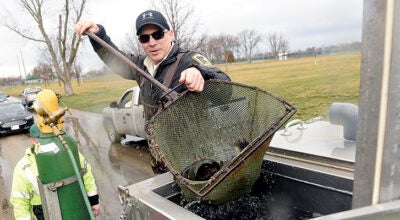Others’ opinion: After positive state budget forecast, proceed cautiously
Published 4:39 am Saturday, December 7, 2019
Star Tribune
Distributed by Tribune Content Agency, LLC.
Minnesota’s latest economic forecast has some good news, along with notes of caution that should be heeded.
First the good: Revenue projections are up and spending estimates slightly down, producing a projected $1.3 billion budget surplus. That’s after an automatic allocation of $284 million to the reserve account, which has hit its target for the first time. There’s more: Worker wages are rising, in part because of a tight labor market.
Last year also saw a tripling of new household formation in the state, with Minnesota reversing a 15-year trend of losing population to other states. Rising household wealth, robust demand for workers, continued low interest rates and low fuel prices have all contributed to strong consumer spending.
But there are trouble spots that add uncertainty, and state leaders would be wise to temper their expectations and spending appetites. Manufacturing is soft and farmers are hurting, due in part to an escalating trade war. Minnesota, like other states, will have to brace for a coming slowdown, exacerbated by an aging population. As always, the state’s forecast does not account for inflation, though agencies don’t have the same luxury as they plan their financial obligations. (For the morbidly curious, inflation amounts to about $1 billion.)
As leaders plan for the projected windfall, they should also keep strongly in mind how little of it is ongoing money. Minnesota Management and Budget Commissioner Myron Frans said that of the $1.3 billion, about $220 million can be attributed to recurring revenue. The remainder is one-time money, and sound fiscal management would dictate it be confined to one-time spending.
The other primary task of this Legislature will be the size and scope of a bonding bill, which typically funds capital investments across the state. Those projects can range from humdrum but necessary maintenance, to those that leverage other money and pay dividends in economic growth and well-being for decades to come. Now may be the time to go a little heavy on bonding. The forecast shows that the state can accommodate it, communities need it, and the window for low-interest rates may soon close.
We’re at the very beginning of some important discussions. Instead of immediately retreating to opposite, partisan corners, we hope legislators will make an extra effort to hear one another out and to include a broad swath of Minnesotans in those talks.
Gov. Tim Walz said in releasing the forecast that “we need to budget for the next generation, not just the next year. That means exercising caution.” At the same time, he noted correctly that the state should act to assure Minnesotans that “the things that grew this economy will not be pulled out from under them.”
That would be a good course, along with a focus on prudent investments that target long-term gains that all Minnesotans can share in.




